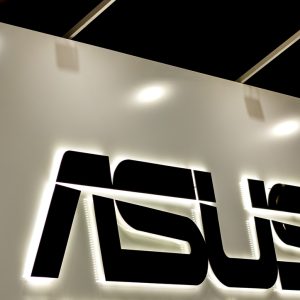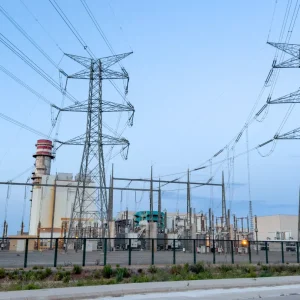
Europe was once the world’s powerhouse for the production of semiconductors. Encompassing 44% of the total market share for chips, the continent’s expertise and manufacturing capacity seemed unassailable – that is, until manufacturers began shifting their supply chains in the mid-2000s to East Asia in search of increased investment opportunities and lower labour costs.
That might be about to change. Earlier this week, EU member states agreed to a new €45bn plan of action, known as the European Chips Act, to fund an expansion in the bloc’s production of microprocessors and wean the continent off its dependence on US and Asian manufacturers. The goal, says the European Commission, will be to ‘bolster Europe’s competitiveness and resilience in semiconductor technologies and applications, and help achieve both the digital and green transition.’
The European Chips Act is also an attempt to reverse a stunning decline in the global competitiveness of the continent’s chip industry over the past thirty years. As a result, “a lot of companies withdrew from Europe” in the mid-2000s, said Risto Puhakka, VLSI Research’s president of semiconductor market analysis, in an interview with Tech Monitor last year. “It lost its competitiveness in the big semiconductor markets like memory and advanced logic.” Consequently, added Puhakka, “a degree of consolidation in the market was natural.”
Restoring Europe’s former glory in the global chip market will be a huge undertaking – though recent investments by semiconductor giants reveal significant interest from the industry in doing just that. Earlier this month, the German semiconductor manufacturer Infineon announced its plans for the construction of a new factory in Dresden worth approximately €5 billion, as it moves to meet an expected surge in growth of analog and power semiconductors. GlobalFoundries has also set its sights on the eastern German town, pledging up to €1bn for a new production facility aimed at doubling the company’s global wafer production capacities. Other tech giants like Bosch have similarly announced investments worth billions of euros in Dresden, as well as further west in the city of Reutlinger.
But the biggest investment announced in Europe so far comes from the beleaguered semiconductor giant Intel, which revealed its plans for two semiconductor fabs in Magdeburg worth up to €17bn. According to the company, the construction of both facilities will begin next year, with a view to becoming operational by 2027. Intel also has plans to expand into Ireland, dedicating €12bn towards doubling its manufacturing space in Leixlip. All of these plans amount to almost €50bn worth of investments announced this year alone, based on Tech Monitor’s research.
European Chips Act unlikely to significantly reduce foreign chip imports
Whether these investments will end Europe’s hunger for foreign chips remains to be seen. For decades, the continent has been a net importer of semiconductor devices, consuming approximately 20% of the global chip supply while manufacturing just 9%, according to a report published earlier this year by Deloitte. Figures for the total amount of semiconductor imports into Europe for 2021 are unclear, but in 2020, Europe imported 63% of diodes, transistors and semiconductor devices from China – more than double the amount imported in 2017.
This pattern is likely to continue in the next few years, according to Deloitte. ‘Given the scale of growth in the semis industry and the pace at which new factories can be built,’ wrote analysts, ‘Europe could remain a net importer of semis as of 2030, despite the best efforts of the EU Chips Act.’
For their part, EU officials have recognised the immense difficulties involved in untangling supply chains from China and other East Asian countries. Last month, the EU trade commissioner Valdis Dombrovskis told industry figures that decoupling from the People’s Republic was not an option for the region. "The EU should continue engaging with China with pragmatism and without naivety. Our trading relationship needs more balance and reciprocity," he said.
Recently published data on the complexity of semiconductor supply chains and how key materials are concentrated in certain countries illustrates the problem. According to the Center for Security and Technology, Japan currently provides more than half of the world’s supply of wafers. Meanwhile, Taiwan has a stranglehold over the world’s foundries and advanced manufacturing equipment, and China continues to provide the majority of the raw materials needed to build semiconductors. The sheer number of cross-border movements involved in the production of semiconductors is another complicating factor.
‘Chip making, from design to production, assembly, testing and packaging, is comprised of over 1,000 steps using around 300 materials, including silicon wafers, gases and chemicals,’ researchers from the European Parliamentary Research Service wrote earlier this year. ‘Large semiconductor producers rely on up to 16,000 suppliers worldwide. A supply chain crosses the border 70 times before reaching an end user and over 50 choke points where one region holds more than 65% of the global market share.’
Recapturing dominance of the global chips market, then, is an unlikely prospect for Europe. Analysts agree. One of the more realistic scenarios mapped out by Deloitte describes a only handful of European countries becoming hubs for chip production, albeit within a framework wherein Germany retains the lion's share of engineering capabilities and dominates investment in the sector. ‘Given the time and resources required to, for example, create, staff and power a fabrication plant, or to develop a specialist design capability at scale, this scenario is probable in Europe as of the end of the decade,’ the researchers wrote.
A conservative projection of the European Chips Act from the EU Parliamentary Research Service paints a similar picture. ‘By 2030, Europe’s share of global chip production will not be doubled despite the adoption of the EU Chips Act but will rather be at similar levels as now in view of greater investments elsewhere,’ the researchers said.
There's only one example of another jurisdiction attempting to pull off the same feat as the EU for its chip industry: China. Though unfinished, the efforts of the People's Republic so far have been expensive and, some feel, unsatisfactory. According to the policy think tank Bruegel, China’s efforts in the last eight years to break free from its dependence on Western supply chains have been mostly unsuccessful, despite spending billions towards doing so. Ultimately, ‘upgrading [homegrown] production is challenging,' said the report, 'no matter the amounts of available capital.’
Read more: The US wants to cut off East Asian chip exports to China. Some Asian countries are set to reap the benefits.
Featured image by Alexandros Michailidis / Shutterstock






